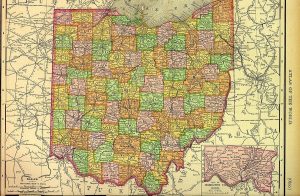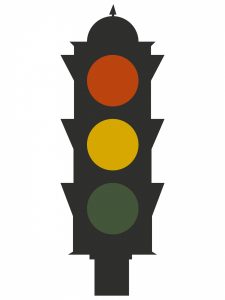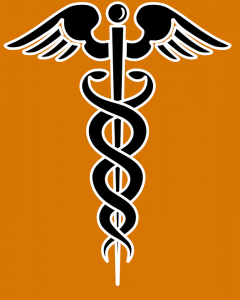One of my fellow parishioners in southern Vermont, Imogene Drakes, PhD, has introduced us, through our monthly newsletter and an article in our local newspaper, to several African American men who, she says, “are not household names — and they should be.” Let us pick up on Dr. Drakes’ introductions and offer some short biographical sketches of three of these men.
Lewis Latimer (1848-1928): inventor who advanced the light bulb.
- Lewis Howard Latimer was born in Chelsea, Massachusetts, to runaway slaves who migrated to Massachusetts in 1842 from Virginia. Father George Latimer’s capture by his owner attracted so much attention that he was purchased by abolition supporters who set him free.
- Latimer served in the United States Navy for the Union during the Civil War. After his discharge in 1865, he worked in several capacities in Boston. Skilled at sketching patent drawings, he became a head draftsman.
- He married Mary Wilson in November 1873, and they had two daughters. Both Lewis and Mary were active members of the Unitarian Church.
 In 1874, along with WC Brown, Latimer co-invented an improved version of a lavatory compartment for railroad trains.
In 1874, along with WC Brown, Latimer co-invented an improved version of a lavatory compartment for railroad trains.- Two years later, Alexander Graham Bell asked Latimer to draft the drawing necessary for a patent application for a device for deaf children: the telephone. The application was submitted on February 14, 1876, just hours before another application was submitted by Elisha Gray for a similar device.
- In Bridgeport, Connecticut, Latimer was hired in 1880 as the assistant manager and draftsman for US Electric Lighting Company owned by Hiram Maxim. Maxim, the chief rival to Thomas Edison, the inventor of the electric light bulb, greatly desired to improve on Edison’s version. Latimer’s goal was to create a longer-lasting bulb.

- Latimer then devised ways to make light bulbs cheaper and more efficient, which in turn led to electric lighting to be used in homes and on streets. As more cities started installing street lights, Latimer was hired to lead planning teams. Consequently, he “helped to install the first electric plants in Philadelphia, New York City and Montreal and oversaw the installation of lighting in railroad stations, government building and major thoroughfares in Canada, New England and London.”
- Other accomplishments for which we owe Latimer a great deal of thanks include the following: the creation of a safety elevator; receiving a patent for Locking Racks for Hats, Coats, and Umbrellas for use in restaurants, hotels and office buildings; devising an improved version of a Book Supporter for neatly arranging books on shelves; and creating a method of making rooms more sanitary and climate controlled, especially useful in hospitals.
Garrett Morgan (1877-1963): inventor of the traffic light.
- Garrett Augustus Morgan was born into a large family in Paris, Kentucky.
 He moved to Ohio – to Cincinnati and then Cleveland. It was in Cleveland that he learned about sewing machines; in 1907 he opened his own sewing machine store, selling new machines and repairing old ones.
He moved to Ohio – to Cincinnati and then Cleveland. It was in Cleveland that he learned about sewing machines; in 1907 he opened his own sewing machine store, selling new machines and repairing old ones. - In 1908, Morgan married Mary Anne Hassek; together they had three sons.
- The next year, Morgan opened a tailoring shop, selling coats, suits and dresses; Mary Anne worked with him, since she had experience as a seamstress. There he developed his first invention while trying to perfect the needle of the sewing machines. The invention was the first human-hair straightener. Morgan marketed the product as the GA Morgan Hair Refining Cream; his company that sold the product, the GA Morgan Refining Company, became very successful.
- In 1912, Morgan developed something entirely different, what eventually became known as a gas mask. Developed primarily for firefighters, engineers, chemists and others who routinely had to breathe noxious fumes or dust, the device was manufactured and sold by the National Safety Device Company, with Morgan as its General Manager. Morgan was awarded a gold medal for the device at the Second International Exposition of Safety and Sanitation.
- The mask was proven life-saving on July 24, 1916, when an explosion occurred in a tunnel being dug under Lake Erie by the Cleveland Water Works. Garrett and his brother Frank Morgan both proved themselves heroes as well, as they donned the safety devices, went into the smoke- and gas-filled tunnels, and saved a number of workers.
 The incident made national news. Subsequently Morgan “received a gold medal from a Cleveland citizens group as well as a medal from the International Association of Fire Engineers, which also made him an honorary member.”
The incident made national news. Subsequently Morgan “received a gold medal from a Cleveland citizens group as well as a medal from the International Association of Fire Engineers, which also made him an honorary member.” - Racism creeps into this otherwise inspiring story. At first, many orders were placed for the device – but then canceled when customers learned that Morgan was black. In an ironic twist, however, the outbreak of World War I, with its use of poisonous gases, brought a new use for the gas mask by the US Army; the mask saved thousands of soldiers’ lives.
- One of Morgan’s next endeavors was developing and patenting the automatic traffic signal. Morgan sold the rights to his device to the General Electric Company, and it is to Morgan that we owe today’s modern traffic lights.

- Morgan was lauded for his efforts by the likes of John D. Rockefeller and JP Morgan. Realizing that, despite his own success, his fellow blacks continue to suffer. So Morgan devoted his time and energy to a newspaper called the Cleveland Call (later renamed the Call & Post); served as the treasurer of the Cleveland Association of Colored Men which eventually merged with the National Association for the Advancement of Colored People (NAACP); and was a candidate for Cleveland’s City Council.
- One interesting note is that Morgan was the first black man in Cleveland to own a car.
Daniel Hale Williams III (1856-1931): open-heart surgeon.
- Daniel Hale Williams III, born in Hollidaysburg, Pennsylvania, was introduced early in life to the fight for equality and civil rights.
 His father, in the barber business, worked with the Equal Rights League, a black civil rights organization active during Reconstruction.
His father, in the barber business, worked with the Equal Rights League, a black civil rights organization active during Reconstruction. - Unfortunately, the elder Williams died when Daniel was only 10 years old. Young Daniel worked in several areas until he became an apprentice to Dr. Henry Palmer, a highly accomplished surgeon. Daniel then completed training at Chicago Medical College.
- Williams worked on Chicago’s South Side, taught anatomy at his alma mater, and became the first African American physician to work for the city’s street railway system. Williams adopted sterilization procedures for his office informed by the recent findings on germ transmission and prevention from Louis Pasteur and Joseph Lister.
 “Due to the discrimination of the day, African American citizens were still barred from being admitted to hospitals and Black doctors were refused staff positions. Firmly believing this needed to change, in May 1891, Williams opened Provident Hospital and Training School for Nurses, the nation’s first hospital with a nursing and intern program that had a racially integrated staff.” Williams worked there as a surgeon.
“Due to the discrimination of the day, African American citizens were still barred from being admitted to hospitals and Black doctors were refused staff positions. Firmly believing this needed to change, in May 1891, Williams opened Provident Hospital and Training School for Nurses, the nation’s first hospital with a nursing and intern program that had a racially integrated staff.” Williams worked there as a surgeon.- In 1893, Williams made history again by successfully operating on a man with a severe stab wound to his chest. Without the benefits of a blood transfusion or modern surgical procedures, Williams successfully performed one of the earliest open-heart surgeries.
- The following year, Williams relocated to Washington, DC, to become chief surgeon of the Freedmen’s Hospital. Freedmen’s provided care for formerly enslaved African Americans but had fallen into neglect. Williams worked diligently to improve the hospital at many levels. He improved surgical procedures, increased specialization, and initiated ambulance services.

- In 1895, Williams co-founded the National Medical Association, a professional organization for black medical practitioners, since the American Medical Association did not allow African-American membership.
- Williams left Freedmen’s Hospital in 1898. He married Alice Johnson, and they moved to Chicago, where Williams returned to his work at Provident. Soon after the turn of the century, he worked at Cook County Hospital and later at St. Luke’s, a large medical institution with ample resources.
- Beginning in 1899, Williams also made annual trips to Nashville, Tennessee, where he was a voluntary visiting clinical professor at Meharry Medical College for more than two decades. He became a charter member of the American College of Surgeons in 1913.
- He retired in 1926, after surviving a debilitating stroke, and lived the rest of his life at the all-black resort community of Idlewild, Michigan.
Take-aways
These three examples of African American men who contributed so much to American society, and to the world, are the tip of the iceberg of people in our culture (and, we should admit, worldwide) who have existed for too long in the shadows. At all levels of our society, and in all sectors – school, workplace, religious institutions, etc. – we can and must bring into the light examples of people who have made vital contributions to our lives but who have at times been effectively erased from our collective history. Saluting these individuals not only helps correct a skewed history and gets us closer to the truth, it also provides role models, inspiration and hope for the next generation. I thank Dr. Drakes for bringing the three men highlighted here to our attention.
Resource
Drakes, Imogene A. “Why Black lives matter,” The Commons, August 5, 2020
